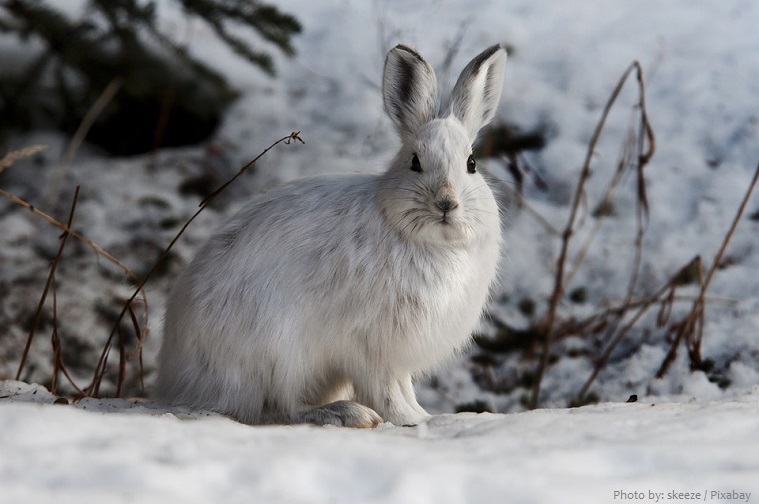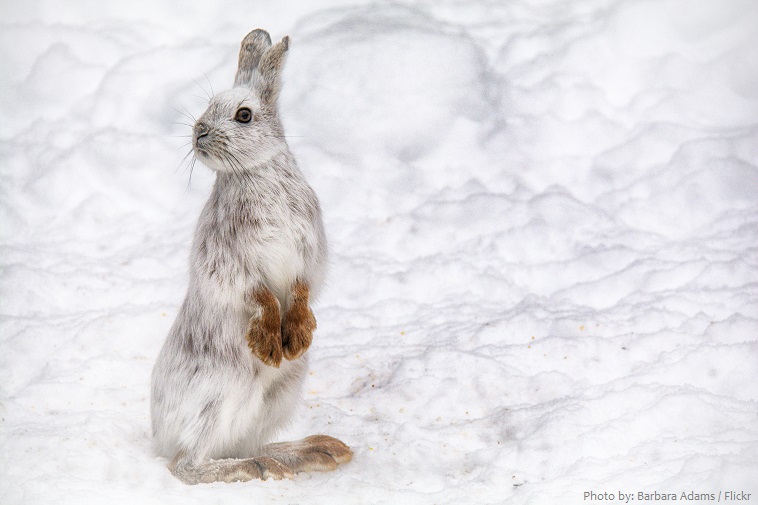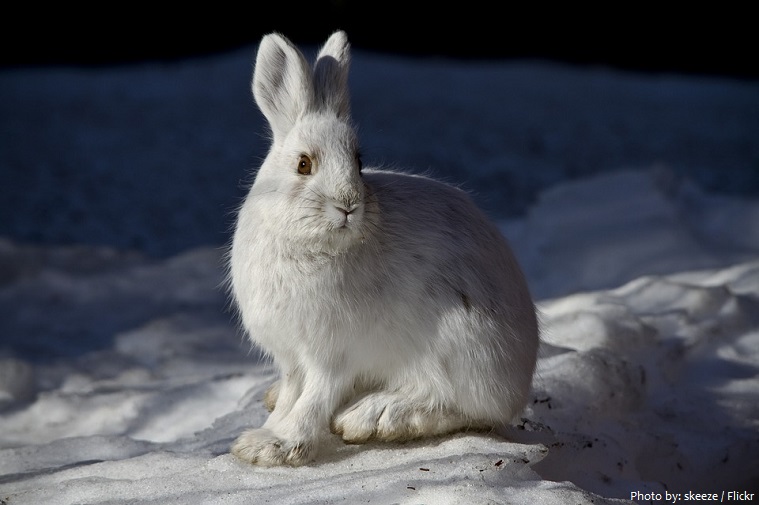The snowshoe hare (Lepus americanus), also called the varying hare, or snowshoe rabbit, is a species of hare.
Snowshoe hares are found in North America.
They live in several different habitats including open fields, fence rows, swamps, riverside thickets, cedar bogs and coniferous lowlands.
The lifespan of the snowshoe hare is not very long; but some hares can live up to 5 years in the wild.
Snowshoe hares range in length from 40 to 51 cm (16 to 20 in), of which about 5 cm (2 in) is tail. They usually weigh between 1.4 and 1.5 kg (3 to 3.3 lbs).
The snowshoe hare’s fur is rusty brown in the spring and summer, and white in the winter. It also always has a gray underbelly, and black on the tips and edges of its ears and tail.
The hind feet are heavily furred to protect it from freezing temperatures; and all four feet are large in proportion to body size, a snowshoe-like adaptation that enables the hare to travel over snow.
The snowshoe hare’s ears are not as long as some other species of hares’ ears.
Snowshoe hares are typically solitary, but they often live at high densities, and individuals share overlapping home ranges.
Most activity is restricted to pathways, trampled down “roads” in the vegetation that the hares know very thoroughly.
They are active at low light levels and so are most often seen out and about at dawn, dusk, and during the night. They are also active on cloudy days.
During the daylight hours, hares spend a great deal of time grooming, and they take fitful naps.
These animals have acute hearing and are able to detect predators.
They are quick and agile, able to move as fast as 43 km/h (27 mph). They can jump up to 3 metes and change direction quickly to escape predators.
Snowshoe hares are also accomplished swimmers. They occasionally swim across small lakes and rivers, and they have been seen entering the water in order to avoid predators.
In summer, the snowshoe hare feeds on plants such as grass, ferns, and leaves; in winter, it eats twigs, the bark from trees, and buds from flowers and plants and, similar to the Arctic hare, has been known to occasionally eat dead animals.
This animal does not hibernate.
Breeding season for snowshoe hares runs from mid-March through August. The snowshoe hare may have up to 4 litters in a year, which average 3 to 8 young.
Important predators of snowshoe hares include gray foxes, red foxes, coyotes, wolves, lynx, bobcats and mink.
Snowshoe hares exhibit enormous population fluctuations, peaking every 9-10 years. Numbers vary from approximately one hare per 50 hectares (125 acres) to upwards of 200 per hectare (2.5 acres).
Historical records of animals caught by fur hunters over hundreds of years show the lynx and hare numbers rising and falling in a cycle, which has made the hare known to biology students worldwide as a case study of the relationship between numbers of predators and their prey.





